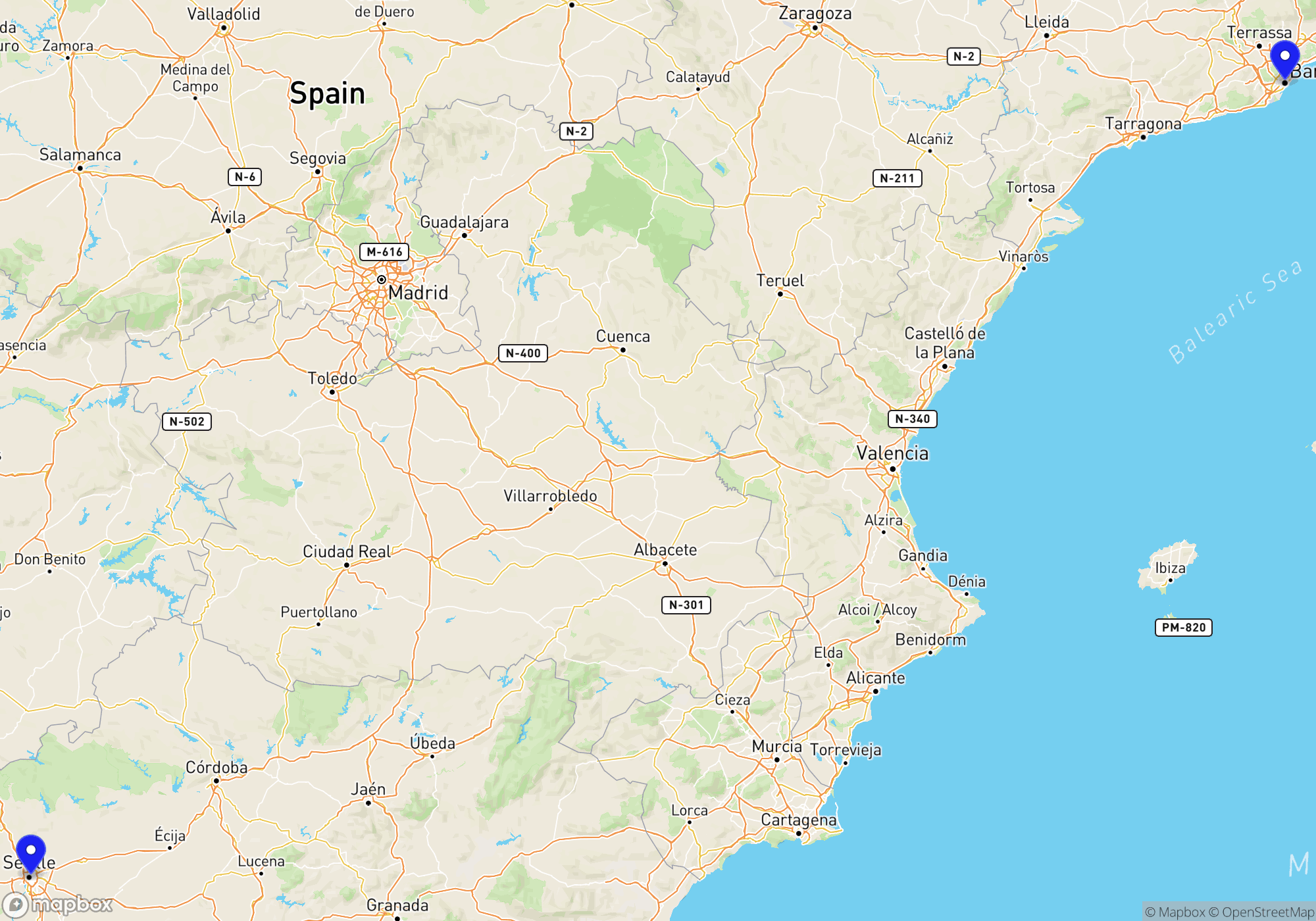
You can buy train tickets directly from the operator or through a reseller. The reseller is typically slightly more expensive (3-5%) but can provide an easier booking experience, especially if you travel with more than one operator.


These operators provide a complete journey either as a direct connection or through their partners. Even if a change of trains is involved, it’s all part of a single itinerary managed by the same train company or its partners, offering a smoother and more coordinated travel experience.

Some operators don’t run direct trains the whole way, but they serve either the departure or arrival station. In many cases, you can combine two of these operators to complete your journey by changing trains along the way. This is often a flexible and budget-friendly way to travel — especially if you’re comfortable piecing together your own itinerary.
Just keep in mind that these are separate journeys, which means a delay on the first leg could cause you to miss the second without automatic compensation or rebooking. It’s a great option for confident travelers who don’t mind a bit of extra planning.




FlixBus is primarily known as a long-distance bus service provider rather than a rail operator. It may offer integrated travel options that include bus and train tickets, but it does not operate its own trains. If you are looking for train travel specifically from Seville to Barcelona, the primary rail operator would be Renfe, Spain’s national railway company. Renfe operates various types of trains suitable for different kinds of travel, including high-speed AVE trains which are popular for long-distance travel between major cities like Seville and Barcelona. These trains typically offer amenities such as comfortable seating, Wi-Fi, power outlets, and a café or restaurant car. Customer support is usually comprehensive, with ticketing services available online, via mobile apps, and at train stations. Travelers can also access customer service for assistance with schedules, ticket changes, and travel planning in multiple languages. It’s important for travelers to verify their specific travel requirements and check the latest routes and services available directly through Renfe or other integrated travel platforms they may be using.
Traveling by train from Seville to Barcelona involves domestic rail travel within Spain. For residents of Spain, the Interrail Global Pass and Interrail One Country Pass are not valid for this journey, as these passes do not cover travel within the traveler’s country of residence. For non-EU residents traveling within Spain, the Eurail Pass would be valid for this journey.
Arriving in Barcelona by train, you’ll likely arrive at one of the main railway stations such as Barcelona Sants or Barcelona França. From there, getting around the city using local transportation is convenient and efficient. The Barcelona Metro is a fast and reliable way to navigate the city, with extensive lines connecting most major attractions and neighborhoods. Tickets can be purchased at metro stations, and the T10 multi-journey ticket offers great value for money. Trams are another option, particularly useful for reaching neighborhoods like Sant Martí and areas in the northeast. Barcelona has six tram lines, and stations are located in various parts of the city. Taxis are readily available and can be hailed on the street, found at taxi ranks, or booked via mobile apps like Free Now. They are identified by their black and yellow color. As for ridesharing, Uber does not operate in Barcelona, but alternatives like Cabify are widely used and offer similar services. Additionally, Barcelona boasts an extensive network of buses that reach parts of the city not served by the metro or trams, and they operate frequently. For those who prefer a more flexible schedule, there’s a public bicycle-sharing system called Bicing, although it requires a subscription and is primarily aimed at residents. In sum, Barcelona’s well-integrated public transport system makes it easy to explore the city efficiently.
Barcelona is a significant rail hub in Spain, offering numerous domestic and international train connections. Domestically, travelers can easily reach Madrid using the high-speed AVE trains, which take about 2.5 hours. Valencia is another popular domestic destination, accessible in approximately 3 hours via the Euromed or Talgo services. For those heading north, the AVE service to Zaragoza takes about 1.5 hours.
Internationally, Barcelona provides direct train connections to France. The high-speed TGV and RENFE-SNCF services connect Barcelona to Paris, with journeys taking around 6.5 hours. Another key international route is to Lyon, with a travel time of approximately 5 hours. Perpignan, a French city close to the Spanish border, can be reached in around 1.5 hours, offering further connections into the French rail network. Additionally, the railway line to Milan via the Thello night trains has been popular historically, although specific services may vary, so checking current schedules is advisable. These routes make Barcelona an excellent starting point for exploring Spain and Europe by rail.
The best months to visit Barcelona are generally from late spring to early summer, specifically May and June. During these months, the weather is warm but not yet the peak summer heat and humidity, making it ideal for exploring the city comfortably. Prices tend to be more moderate compared to the high tourist season of July and August, when accommodations can be more expensive, and the city is crowded. Additionally, May hosts several local events, including the Primavera Sound Festival, attracting music enthusiasts. If you prefer fewer crowds and even lower prices, visit in September, when the weather remains pleasant, tourists begin to depart, and you can experience the city’s festive La Mercè in late September. Traveling by train offers a scenic and relaxed approach, allowing you to arrive in the heart of the city, ready to enjoy the vibrant Catalan culture and historical sites.
When traveling by train from Seville to Barcelona, consider packing a comfortable outfit and a lightweight jacket, as train temperatures can vary. Don’t forget your smartphone, charger, and portable power bank to keep your devices powered throughout the journey. Bring headphones for entertainment and a good book or e-reader. If you plan to work or browse the internet, a laptop or tablet could be useful. A refillable water bottle and some snacks will keep you refreshed during the journey. Don’t forget necessary travel documents like your ID or passport, as well as your train tickets, which could be digital or printed. Spain uses Type C and F plugs with a standard voltage of 230V, and likely this will be compatible with devices from many European countries, but double-check if you need an adapter or converter. A small first-aid kit with basic essentials and any personal medications should be kept handy. Additionally, pack a city map or a guidebook for Barcelona, sunscreen, sunglasses, and comfortable shoes for exploring, as well as any particular toiletries or personal hygiene items you might need.